Employment Logic
The cultural shift needed to improve VET outcomes in schools
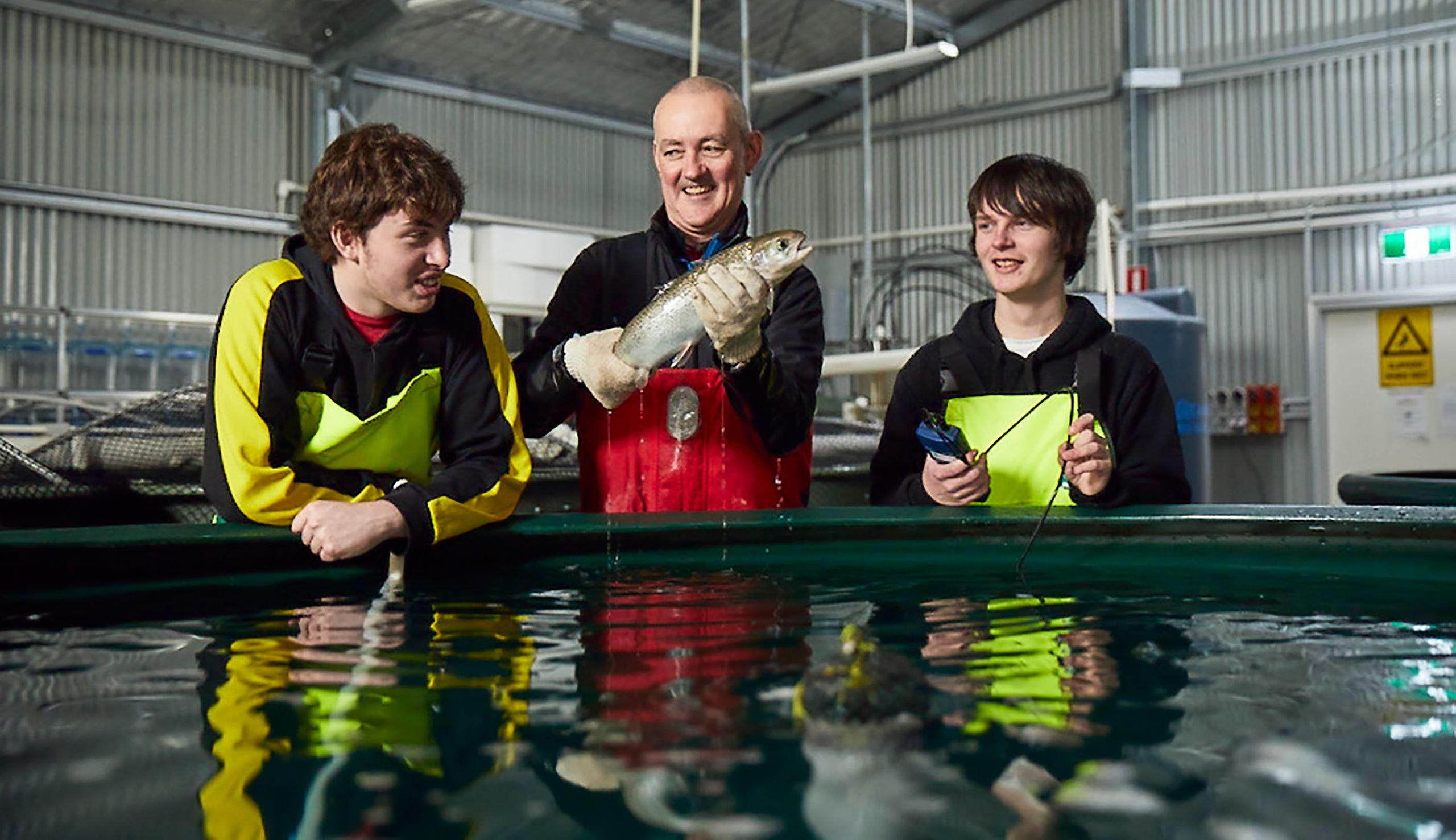
By Steve Harrison
Churchill Fellow 2015, Tasmania
Published 12 February 2021
In Norway, programs of vocational education and training for secondary school students (VfSSS) achieve a student employment rate of 96%,1 while only 40% of students studying VET in Australian schools gain employment in their field of training.2 So, what's the secret to Norwegian success? Partly, it is about industry engagement, but above all, it is a difference in culture. VET programs in Norwegian schools operate less like schools and more like workplaces.
Secondary school education in Australia is strongly focused around university pathways to the detriment of vocational education and training (VET), yet the majority of students do not enter university, and the majority of jobs in the future will require a VET, rather than a university, qualification.3,4 As a response, many schools have implemented VET programs to the extent that around 50% of Australian senior secondary school students now undertake some form of vocational education and training at school.5
In Australia, the average employment rate of school-based VET students in the industry in which they are trained is just 39%.6 In many schools, the reason for offering VET is, "primarily … a way of keep[ing] non-academically minded students engaged in schooling, rather than having intrinsic value," or for employment outcomes.7 The VET pathway is thus undervalued by our education system—often seen as second best by schools, students, parents and the community. Industry, too, has a less than positive view of VET for Secondary School Students, with many employers and industry groups saying that school leavers lack the capacity for self-management, initiative and a work ethic.8 Parents and educators, however, have rosier views: over 90% believe that students are equipped to thrive in the workplace.9 Yet in a concerning disconnect, 68% of students believe that school does not adequately prepare them for success in the 'real' world.10 This is because, for many students, school in Australia is nothing like the real world.
VET programs require strong connection with industry. In Norway, there is no separate TAFE-type system for the training of apprentices. All such training begins in the local 'Videregående skole' or senior secondary school. As such, to draw comparison with Australian VET, I will not be discussing the TAFE system, but focussing on VET delivered in, and largely by, schools.
A key starting comparison is the length of time that students spend in the workplace. In Norway, to complement their school-based training, Year 12 VET students spend nine weeks in structured workplace training placements in industry. In Australia, such placements are generally around two weeks. Norwegian schools are required to work in mutually-beneficial partnerships with industry, whereas in Australia, relationships are more informal and tend to serve the school more than the industry.11 Notwithstanding this, industry partnerships are not the only determinant of the school VET employment rates in Norway. In fact, the employment rates for VET students in Norway who did not experience any workplace training was still a staggering 81%.12
The key difference in Norway is the difference in the culture of the school. For the delivery of vocational education, Norwegian schools operate more like workplaces than like traditional schools. Expectations of and relationships between staff and students are more like those between employer and employee than adult and child.
In Australia, similar models have been established in a few schools and have proven to be equally successful, but in the main, VET is delivered in a traditional school culture and setting where it really doesn't fit, and which negatively impacts its success for our young people's future.
In 2020, the Review of Senior Secondary Pathways Into Work, Further Education and Training, led by an expert panel chaired by Professor Peter Shergold AC, presented its report (referred to herein as the 'Shergold Report') to the Council of Australian Governments (COAG) Education Council, providing it with advice and recommendations. The Shergold Report "seeks to signal a bold shift in direction," if education is to better "prepare young people both for active citizenship in a democratic society and for purposeful engagement with the labour market".13
In the wake of the COVID-19 crisis, the Grattan Institute has estimated that 3.4 million people will be out of work, with young people disproportionately taking the brunt of the lay-offs and likely to remain unemployed for some time.14 In light of the Australian Government's response package, which includes the Delivering Skills for Today and Tomorrow package, as well as the JobMaker and JobTrainer schemes, the time is ripe for education systems, industry and schools to rethink how VET is delivered in schools, and to implement cultures that truly replicate those found in and required for the work environment. To this end, we need to seriously consider whether it is better to invest $1 billion in re-training school leavers under JobTrainer, or to improve the outcomes of the VET programs in which they are currently studying at school?
Policy context
In 2016, my Churchill Fellowship took me to Norway to examine school-to-work apprenticeship pathways in the European salmon aquaculture industry.15 I was looking to discover ways in which I could enhance the engagement of industry with VET programs for secondary school students in Australia.
In Norway, I had expected to see powerful, mutually-beneficial partnerships between schools and industry, and was not disappointed in my expectations. What I had not expected was the fundamentally different approach taken within the schools to facilitate vocational education and training for senior secondary students.
Close relationships between schools and industry are absolutely fundamental to the success of VET. In Norway, the absence of a stand-alone TAFE system means that industry is required to connect with schools and vice versa. Models of training both at school and in industry are designed to reflect employers' needs. Polesel et al. (2016) term this model, which is also prevalent across Scandinavia and Northern Europe, as being governed by an "employment logic." The purpose of vocational education in this model is for graduates to gain employment. Explicit links are established between the training, the qualifications, and the skills developed to enhance transitions to work.16 Schools are as much like workplaces as the industry in which the students are destined. Dedicated training offices help in the facilitation of VET for secondary school students.
For example, on the island of Froya, south of Trondheim, annual production of farmed Atlantic salmon is about 250,000 tonnes. The Opplaeringskontoret Sor-Fosen (South Fosen Training Office) works as a liaison between employers, the Froya VGS, and other agencies, to promote aquaculture as a career, and to deliver high quality work-based learning that facilitates employment outcomes for students. The Training Office model works in similar ways across industries around the country.17
In Australia, as with other English-speaking countries, we do not yet have the Norwegian employment logic in schools where VET is delivered. Rather, VET in Australian schools operates within an "education logic" culture, where the emphasis is on preparing students for pathways to further learning, with weak links with employers and less differentiation between VET and academic learning.18 There are some rare, excellent exceptions which operate based more on employment logic, such as Tasmania's Huon Valley Trade Training Centre at Huonville High School,19 Hobart College's stand-alone Nursing program20 and NSW's HSC SmartTrack program at St Philip's Christian College in Newcastle.21
In the education logic model, industry's role is seen primarily as a partner in learning, and not as a provider of employment opportunities for young people, and schools do not necessarily prioritise industry as the destination for post-school pathways. With schools operating in an education logic model and workplaces in an "employment logic," there is a clash of cultures in Australia when we try to implement VET across both, resulting in unsuccessful employment outcomes when compared to those of Norway. This is not to say that work has not been done to promote connection between schools and industry in Australia, as the Shergold Report highlights, but nevertheless concludes that, "materials are not enough. To support an increase in industry engagement in schools, there is need for a more explicit authorising environment from education authorities."22
Photo by Steve Harrison.
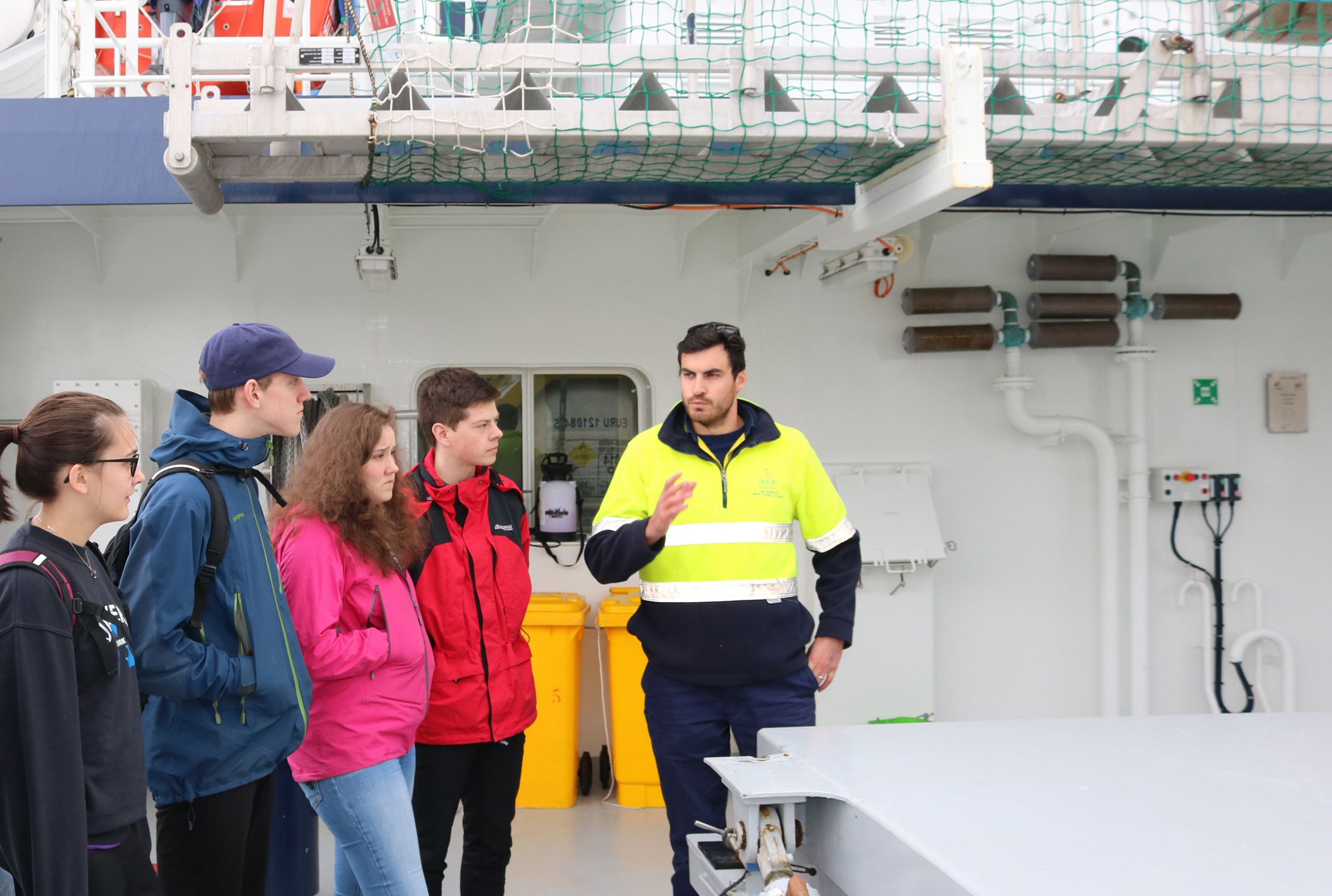
Contrasting school culture and workplace culture
The Australian school model and how it operates has changed little in the past century, and has struggled to keep pace with the job skills needed for the twenty-first century. While much effort has gone into reviewing the so-called 'hard' curriculum, that is the what is to be studied, valued and assessed, little has been done to consider or change the so-called 'soft' curriculum, being the how in which schools operate. In lieu of the term soft curriculum, I will instead refer to this as school culture, and contrast it to workplace culture in the context of effective delivery of VET.
Aspects of school culture that contrast markedly with work culture are to do with relationships, time structure, dress codes and behaviour management. Adult/child relationships pervade Australian schools, where even 18 year olds are often not acknowledged with equal adult status to school employees; and where students are required to wear uniforms that, far from being appropriate workplace attire, reinforce their subservient position compared to their supervisors, and highlight hierarchical levels of esteem in which some students are seen as of more worth than others.23 In what Bernie Bleske calls "the absurd structure of high school", students move from location to location, from supervisor to supervisor, from focus area to focus area, every hour or so, where there is little, if any, overlap of content, and where each and every supervisor sees their particular topic as the number one priority.24 Behaviour management is based on codified rules, compliance and sanctions as opposed to standards of performance matched against mutually agreed outcomes for the organisation. This education logic model of school culture is far removed from the culture of the modern workplace. To try and impose VET, which has been conceptualised to address the needs of an employment logic culture, into a traditional school culture, is doomed to failure, and if it hasn't quite failed, it is certainly not performing to its potential.
The Australian vocational education and training system has been written by industry, for industry needs. The pillars of the VET system are Industry Training Packages which comprise the skills and qualifications needed for employees to function effectively in certain roles. Units of competency are the building blocks of training packages and qualifications. Each unit will outline the contexts in which the learning is to be undertaken. For example, unit of competency SITHCCC005 Produce dishes using basic methods of cookery from Certificate II in Kitchen Operations states, "Skills must be demonstrated in an operational commercial kitchen. This can be an industry workplace [or] a simulated industry environment such as a training kitchen serving customers."25 SFIAQU202 Handle Stock from Certificate II in Aquaculture states, "Skills must be demonstrated in an aquaculture workplace setting or an environment that accurately represents workplace conditions."26
It is clear, therefore, that training packages require VET to be delivered in actual or, at least, simulated workplaces. There has long been a misinterpretation that to provide a simulated workplace means that a school delivering VET must simply have access to physical and industry-standard facilities and equipment. But this alone is not enough. The above units of competence emphasise that training must be delivered in a simulated industry environment, accurately representing workplace conditions. This is where VET in Australian schools has fallen down. Many schools have outstanding equipment and facilities, but are being dominated by the education logic of school culture. As long as this stands, they have no chance to truly simulate an industry environment or workplace conditions. Unless schools adopt models of workplace relationships, expectations, and performance improvement in place of behaviour management, VET will continue to underperform in terms of employment outcomes for students. The successful Australian examples mentioned earlier each embed these aspects into their school culture.

Photo by Steve Harrison.
Photo by Steve Harrison.
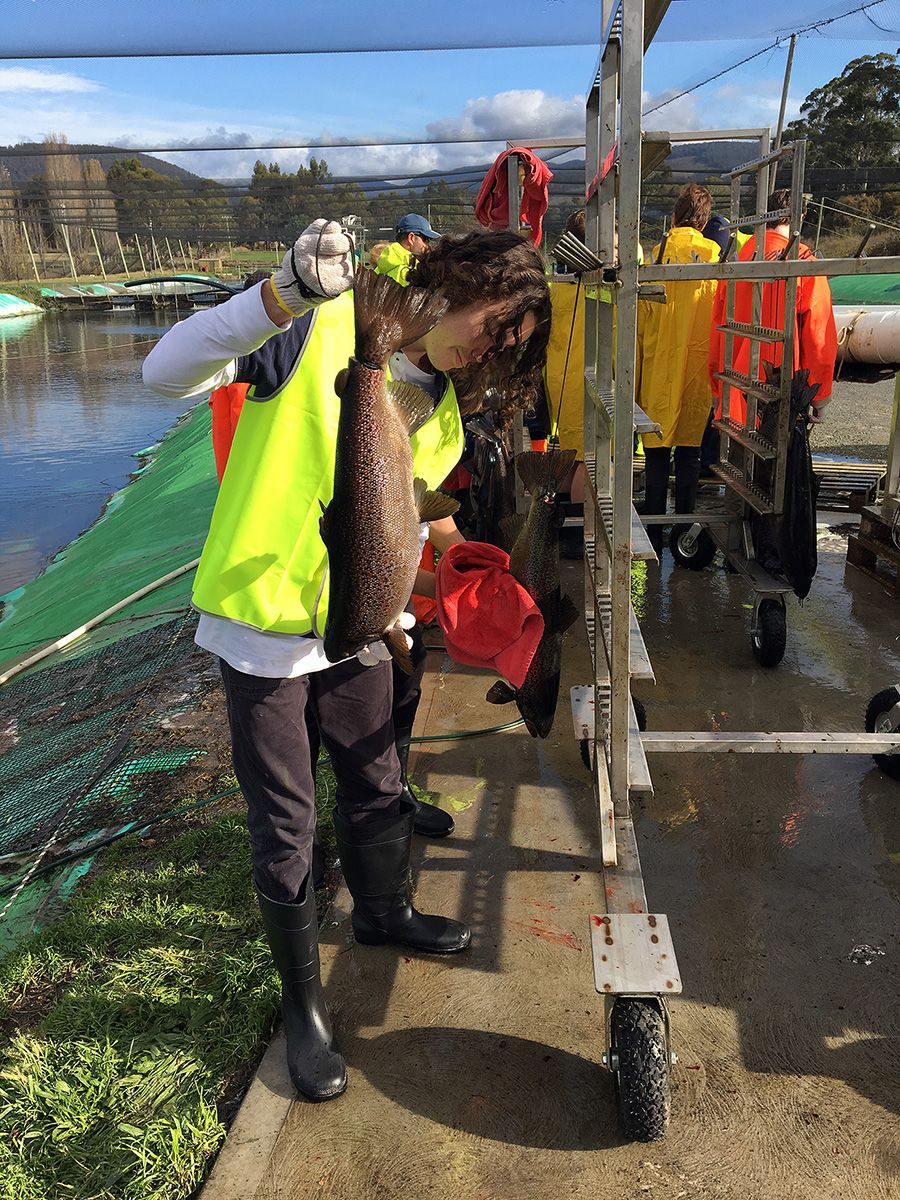
Photo by Steve Harrison.
Photo by Steve Harrison.
A trope in vocational education is that learning is best undertaken "on the job," but Colley et al. (2007) argue this is the case for context, more than facility,
"Teaching and learning are primarily social and cultural, rather than individual and technical activities; they should therefore be studied in authentic contexts".27
If learning on the job is social, then it is not a physically simulated workplace that matters in schools, but socially simulated workplaces. The upside is that, while physically simulated workplaces require significant capital investment, socially simulated workplaces merely require a change in attitude and approach.
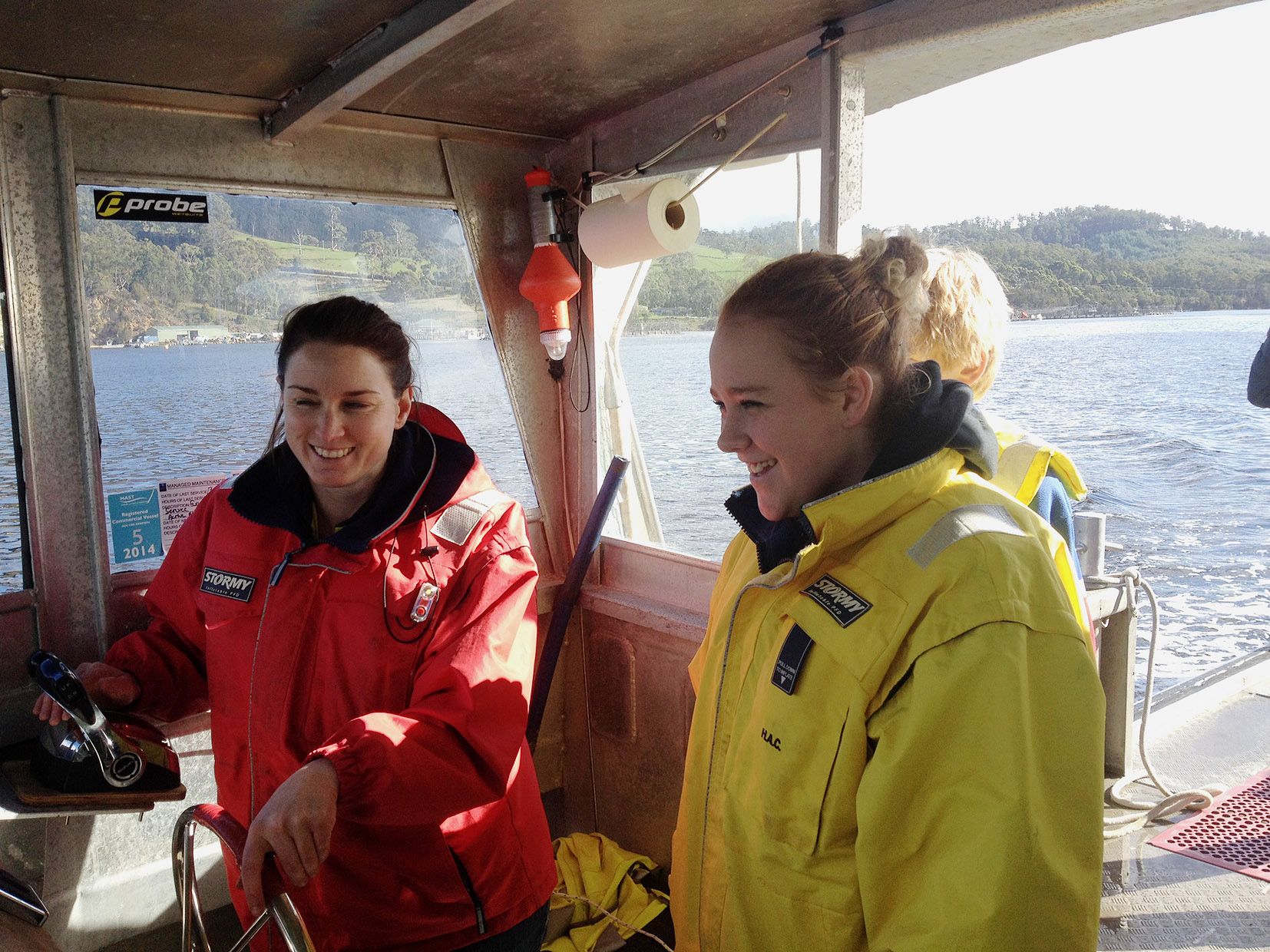
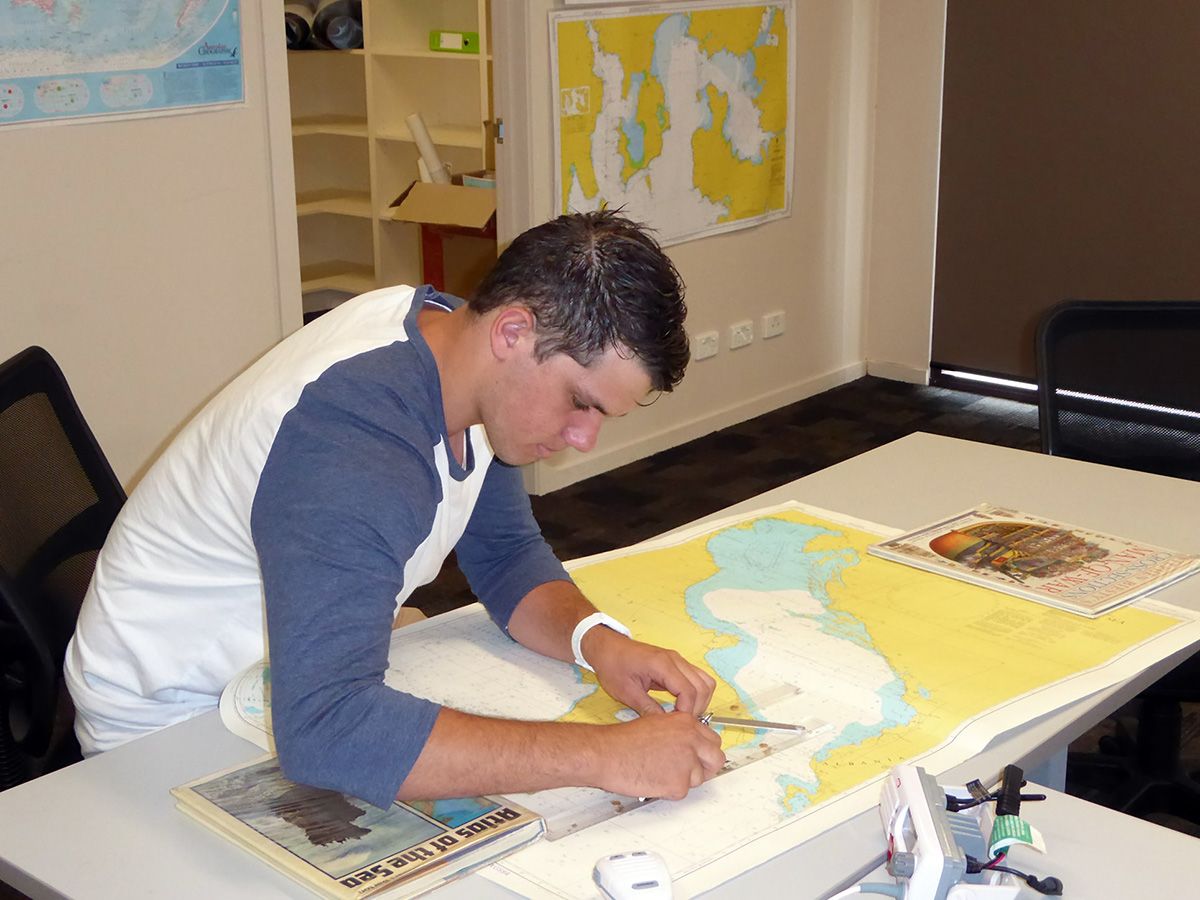
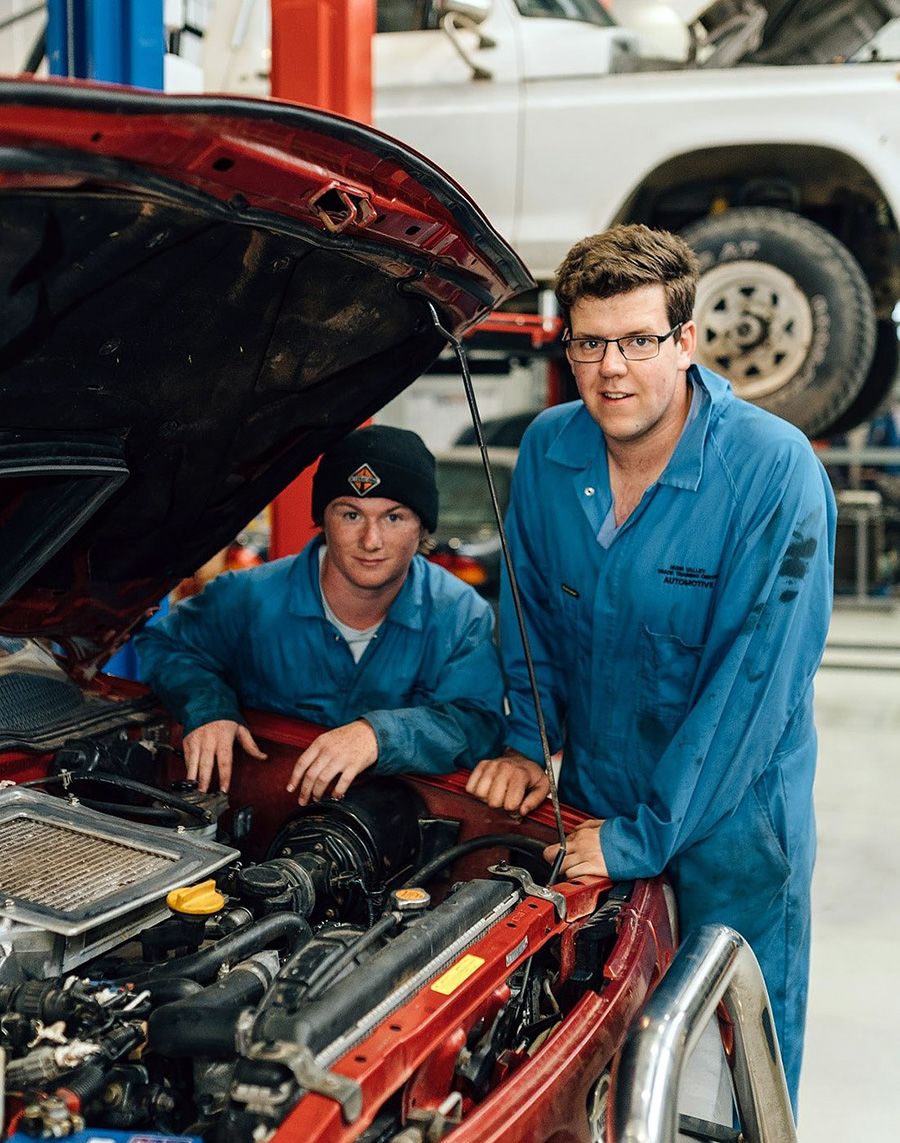

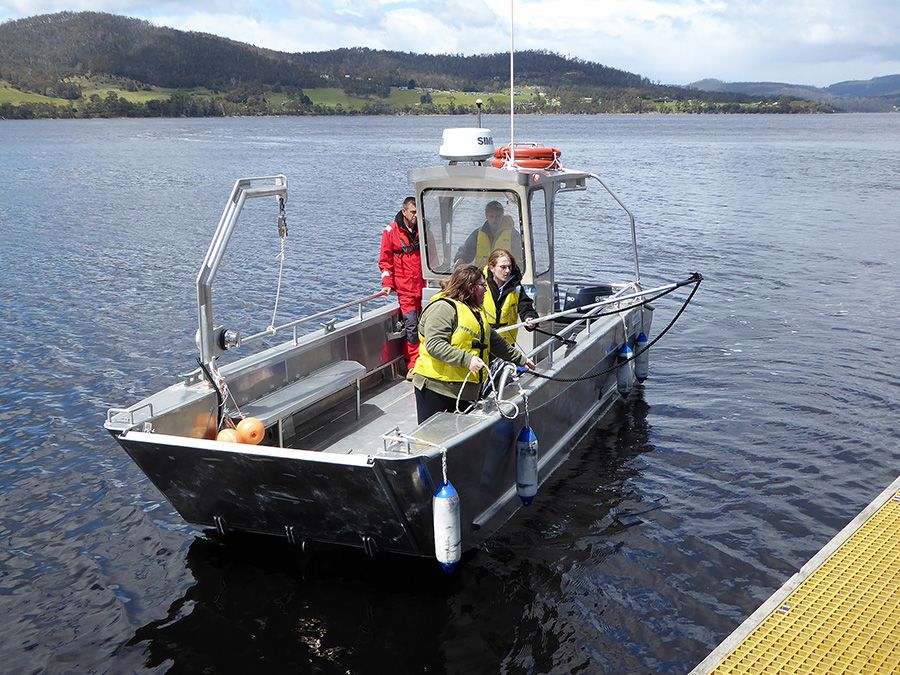
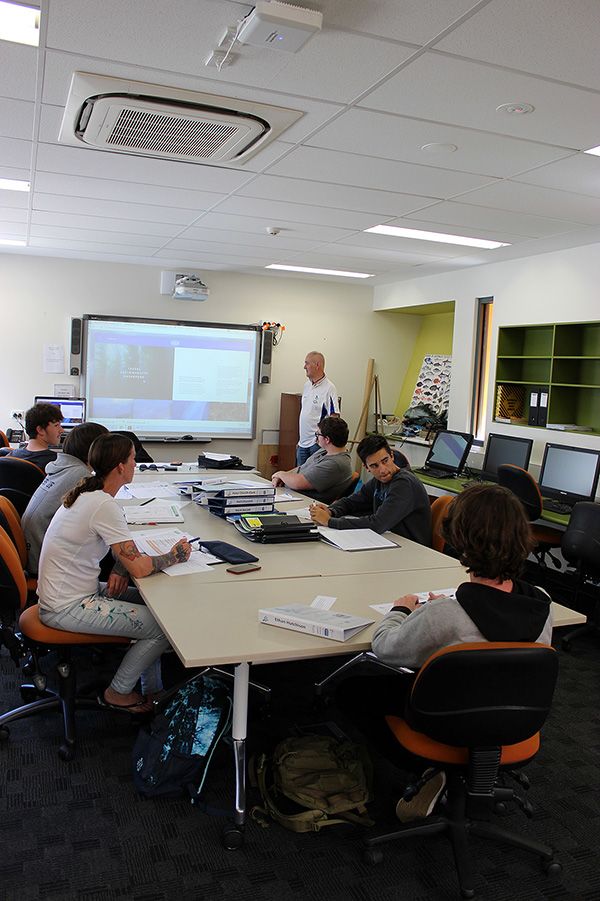

VET aquaculture classes being delivered on industry sites adds employment logic to the learning (photo credits: S. Harrison).
VET aquaculture classes being delivered on industry sites adds employment logic to the learning (photo credits: S. Harrison).

Purposeful learning: plotting a course in maritime operations (photo credit: S. Harrison).
Purposeful learning: plotting a course in maritime operations (photo credit: S. Harrison).

Students and staff operating school workshops as functioning
businesses adds employment logic (photo credits: HVTTC).
Students and staff operating school workshops as functioning
businesses adds employment logic (photo credits: HVTTC).

Students and staff operating school workshops as functioning businesses adds employment logic (photo credits: HVTTC).
Students and staff operating school workshops as functioning businesses adds employment logic (photo credits: HVTTC).

Students working as ongoing functioning teams, not individuals, adds employment logic (photo credit: ©Tassal Group Ltd)
Students working as ongoing functioning teams, not individuals, adds employment logic (photo credit: ©Tassal Group Ltd)

VET aquaculture classes being delivered on industry sites adds employment logic to the learning (photo credits: S. Harrison).
VET aquaculture classes being delivered on industry sites adds employment logic to the learning (photo credits: S. Harrison).
Engagement with industry is paramount for successful VET programs. Much research and policy work has been done on the topic of enhancing and facilitating school and industry partnerships over the last 20 years, but still we have a disconnect due to the clash of cultures. The term pathway has been used as a synonym for transition to work, but rather than talk about the path it is time that we start to walk along it. The Australian Government's recent Industry Training Hubs initiative mirrors some aspects of the Norwegian Training Office model. This has the potential to not only create better linkages between schools and local industry, but also to encourage and support schools to develop a more employment logic culture of vocational education.
There is a danger that unless stakeholders address the issue of school culture when addressing the recommendations of the Shergold Report to improve VET for secondary school students, education systems will continue to apply the education logic that lead to "school for school's sake" solutions. The NSW Curriculum Review has already proposed:
"A curriculum for the final years of school that was less focussed on meeting the requirements of particular post-school destinations and more focussed on providing every student with a broad education that prepared them for ongoing learning, life and work. In such a curriculum there would be no place for dichotomies that separate academic from vocational learning."28
This is not a solution that benefits industry, nor is it likely to develop employability skills in young people if it is delivered in an unchanged traditional school culture.
Policy recommendations
It is clear from the success of the Norwegian system, and from the small number of leading examples in Australia, that the key to the success of VET is the adoption of a workplace learning culture within the school itself, one in which workplace expectations and attitudes are simulated as much as facilities. To do this, the following policy actions need to be undertaken:
- Government must ensure that Recommendation 10d of the Shergold Report, "Formal VET qualifications delivered in schools must be of a quality that is valued by industry and match the quality of VET delivered outside schools,"29 is implemented by requiring education systems to provide support to schools to implement workplace learning cultures where VET programs are delivered. In implementing Shergold Recommendation 11, "Education authorities and industry bodies should formalise their working relationship in order to facilitate the engagement of industry in senior secondary schooling in a systematic and comprehensive manner,"30 government must ensure that the relationship is as much benefit to industry as to education.
- Education Systems must support and require School Principals to define the place of VET programs in their school with MOU's with industry to ensure that VET subjects are offered as much for industry workforce development and employment as for student engagement.
- Discussions should be held with Australian Skills Quality Authority (ASQA) to determine whether compliance audits ascertain if providers are meeting the assessment conditions in terms of workplace environment. ASQA procedures should place additional emphasis on investigating whether simulated workplace environments are socially simulated as much as physically simulated.
- The brief of Industry Training Hubs should be clarified to require them to actively work with schools and industry to assist in the changing of school cultures to more appropriately model those of workplaces.
- VET teachers in schools must be provided with targeted and systematic professional learning to develop capacity to implement and operate within a workplace learning culture.
Stakeholder consultation
Over the last 30 years, a large amount of evidence gathered from stakeholder consultation highlights that VET for secondary school students is not meeting the needs of industry or adequately preparing young people for the world of work. The Shergold Report states that,
"Disappointingly … very little has changed between the Carmichael Report of 1992 and the Joyce Review of 2019. Both reviews noted inconsistencies in quality assurance, training that was insufficiently responsive to industry needs [and] confusion on the purpose of VET delivered to secondary students".31
The Background Paper to the Shergold Report's Review analyses input from students, education systems and employers as to what they see as essential skills. While there is three-way crossover on the value of interpersonal, communication and problem-solving skills, other skills such as accountability, honesty, leadership, flexibility, and self-management sit—surprisingly— alone, as valued only by employers.32
To reiterate, VET is designed to be delivered in a learning culture characterised by an "employment logic." Consultation needs to be sought with the Australian Department of Education, Skills and Employment (DESE)—as the governor of the Australian Qualification Framework, as well as with the National Skills Commission and ASQA, with regard to whether the requirement for VET to operate in appropriate workplace cultures has received compliance attention in the context of arrangements for the delivery of VET to secondary school students.
The Australian Government's recently announced Industry Training Hub initiative has potential in this context. Conversations have been held with the Career Facilitator of the inaugural Industry Training Hub in Burnie, North West Tasmania, around using the industry training hub model to promote not just school-industry connections but the structures and appropriate cultures that are needed to enhance VET and employment outcomes. Further consultation at a national level with the DESE Industry Training Hub leadership team is required.
Engagement of peak and specific industry bodies, such as the Australian Chamber of Commerce and Industry and state counterparts, in a consultative process, has the potential to influence change at the educational policy level within state and national education administrations. The Australian Education Union should also be engaged as a key stakeholder.
Acknowledgments
I would like to acknowledge the assistance of my Policy Peer Reviewers, Adriano Di Prato from a School For Tomorrow and Eric Jamieson from GEMS Education, who provided invaluable expertise, advice and insight through their peer review of this article. I am honoured to have these outstanding educators as my peers, even just for a while! Thanks, also, to critical friends Lesley Richardson, whose 2014 Churchill Fellowship had similar themes to my own, and to the 2018 Australian Teaching Fellows, Yasodai Selvakumaran, Paul Kenna, Greg McMahon and John Cleary, for casting their eyes over my musings. Any errors or omissions are my own.
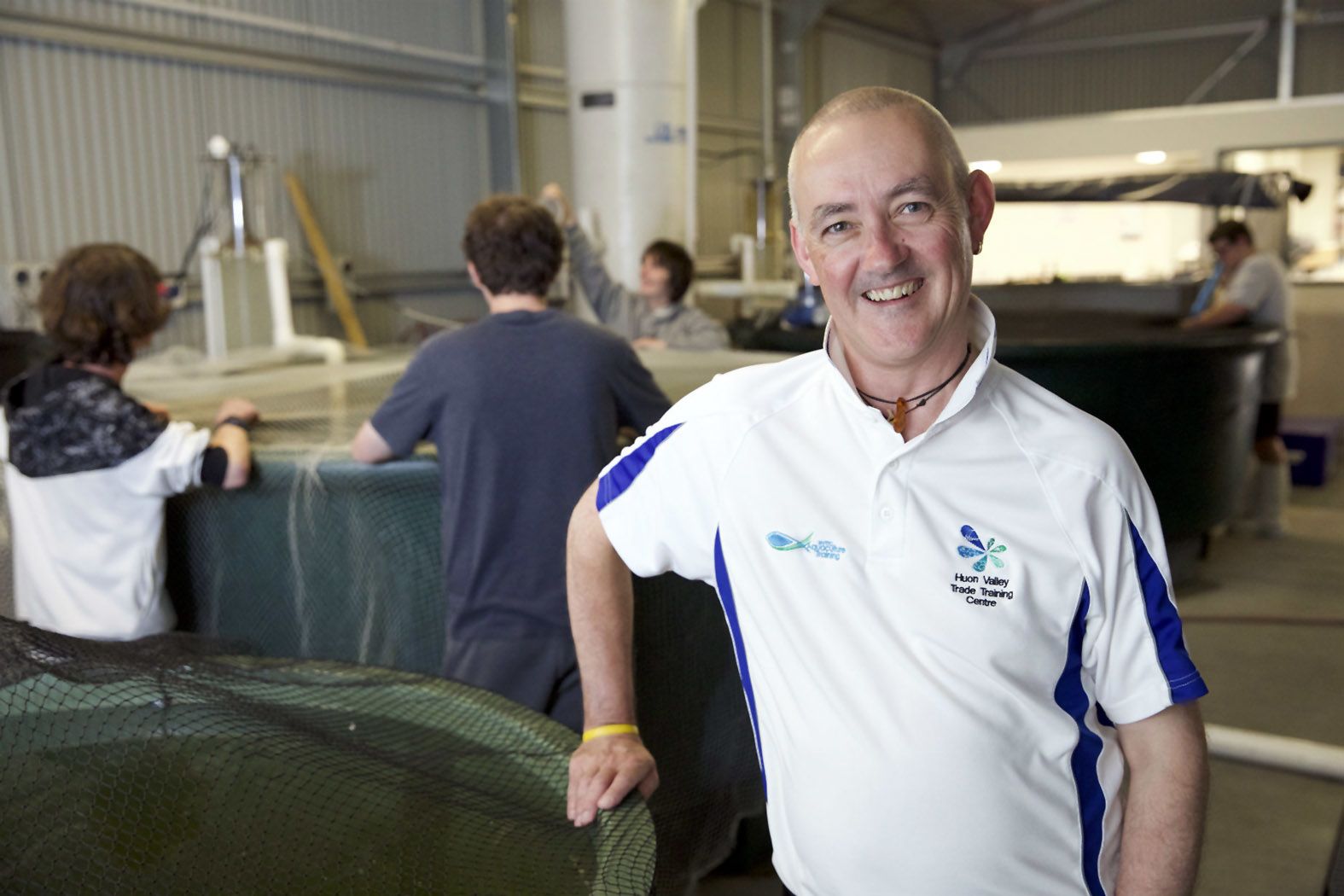
Steve Harrison has delivered vocational education and training in schools for over 20 years. He has developed award winning programs which use simulated workplace environments and engage with industry to both create meaningful futures for young people and meet workforce development needs. Read more about Steve Harrison and his Churchill Fellowship.
References and endnotes
1. Musset, P. Improving work-based learning in schools, Organisation for Economic Co-operation and Development (OECD), 2019, 66.
2. NSW Education Standards Authority, Nurturing wonder and igniting passion, designs for a future school curriculum: NSW Curriculum Review Final Report, Sydney: NESA 2020, 4.
3. Musset, 'Improving work-based learning' 8.
4. South Australia Training and Skills Commission, Economic outlook and industry demand for qualifications 2018, Skills for Future Jobs 2020 Series, 2018, 5.
5. Musset, 'Improving work-based learning,' 10. See also "Indicator A1 – To what level have adults studied?" in Education at a Glance 2018: OECD Indicators, OECD, 2018. Item 51 cites, ... "The International Standard Classification of Education (ISCED 2011) defines vocational programmes as education programmes that are designed for learners to acquire the knowledge, skills and competencies specific to a particular occupation, trade, or class of occupations or trades. Such programmes may have work-based components (e.g. apprenticeships and dual-system education programmes). Successful completion of such programmes leads to vocational qualifications relevant to the labour market and acknowledged as occupationally oriented by the relevant national authorities and/or the labour market."
6. Misko, J, Korbel, P, and Blomberg, D, VET in Schools students: characteristics and post-school employment and training experiences," National Centre for Vocational Education Research (NCVER), 2017, 44.
7. Shergold, P, Calma, T, Russo, S, Walton, P, Westacot, J, Zoellner, D, and O’Reilly, P. Looking to the Future – Report of the Review of Senior Secondary Pathways into Work, Further Education, and Training, Canberra: Education Council, June 2020, 83.
8. Shergold et al., 'Looking to the Future', 13.
9. Renton, S, and Stobbe, K, The Future of Education 2020, Norwest, NSW: McRindle Research, 2020, 24.
10. Shipley, B and Stubley, W. After the ATAR II: Understanding How Gen Z Make Decisions About Their Future, Sydney NSW: Year 13 and YouthSense, 2018, 35.
11. Harrison, S. School-to-work apprenticeship pathways in the European salmon aquaculture industry. Churchill Fellowship Report: The Winston Churchill Memorial Trust, 2016. https://www.churchilltrust.com.au/fellow/steven-harrison-tas-2015
12. Musset, 'Improving work-based learning', 66.
13. Shergold et al., 'Looking to the Future', 12.
14. Coates, B, Cowgill, M, Chen, T, and Mackey, W. "The charts that show coronavirus pushing up to a quarter of the workforce out of work," The Conversation, 19 August 2020.
15. Harrison, 'School-to-work apprenticeship pathways'.
16. Polesel, J, Klatt, M, Damian, B, and Starr, K. "Understanding the nature of school partnerships with business in delivery of vocational programmes in schools in Australia," Journal of Education and Work, 30:3 (2017), 285
17. Harrison, 'School-to-work apprenticeship pathways'.
18. Polesel et al., "Understanding the nature of school partnerships,' 285.
19. Harrison, S, "School Improvement Episode 20: Vocational training and career pathways," Teacher Magazine, ACER, May 2019, https://teachermagazine.com.au.
20. Integrated Teaching Projects, "Introduction to Nursing," https://teachingprojects.weebly.com/introduction-to-nursing.html
21. St Philips Christian College, "HSC SmartTrack", https://spcc.nsw.edu.au/.
22. Shergold et al., 'Looking to the Future,' 100.
23. Harrison, S. "It's not like school, it's just different," Webinar, ACSA, 2020, https://www.acsa.edu.au/pages/webinars/2020/steve%20harrison.mp4
24. Bleskie, B, "The Absurd Structure of High School," GEN, 2019. https://gen.medium.com/the-insane-structure-of-high-school-762fea58fe62
25. https://training.gov.au/TrainingComponentFiles/SIT/SITHCCC005_AssessmentRequirements_R1.pdf
26. https://training.gov.au/TrainingComponentFiles/SFI/SFIAQU202_AssessmentRequirements_R1.pdf
27. Colley, H, James, D, Diment, K, and Tedder, M. "Learning as becoming in vocational education and training: class, gender and the role of vocational habitus," Journal of Vocational Education and Training, 55:4 (2003), 472.
28. NSW Education Standards Authority, "Nurturing wonder and igniting passion, designs for a future school curriculum: NSW Curriculum Review Interim Report," 2019, 94.
29. Shergold et al, 'Looking to the Future', 21.
30. Shergold et al, 'Looking to the Future', 21.
31. Shergold et al, 'Looking to the Future', 83.
32. Shergold, P, Calma, T, O’Reilly, P, Russo, S, Walton, P, Westacot, J, and Zoellner, D. The Review of Senior Secondary Pathways into Work, Further Education and Training: Background Paper, Canberra: Education Council, 20 September 2019, Op. Cit, 9.


